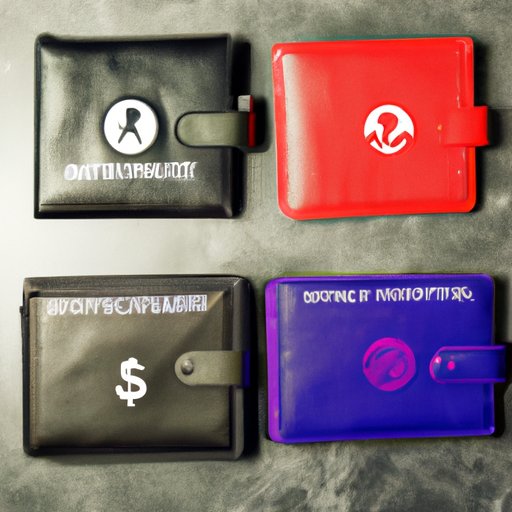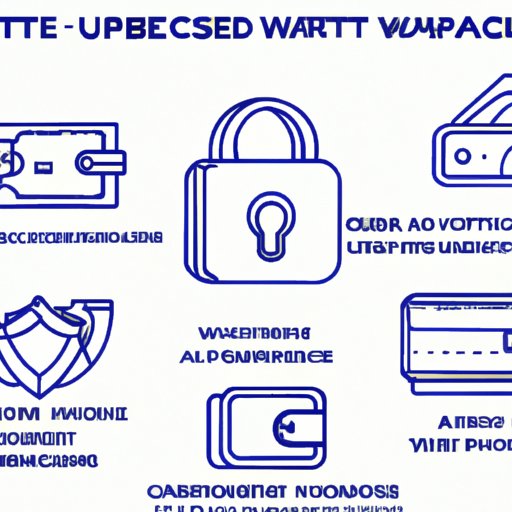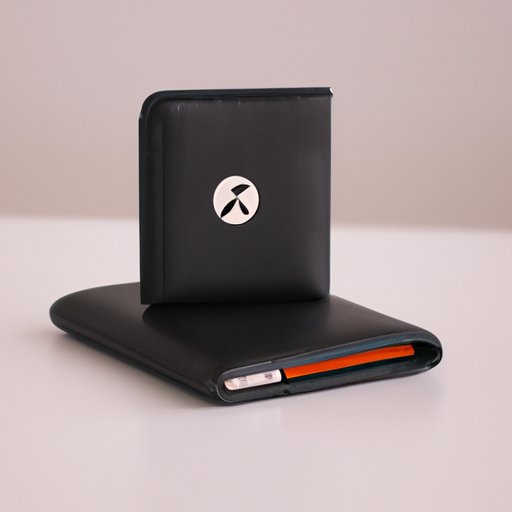Introduction
Crypto wallets are digital wallets that store cryptocurrencies like Bitcoin, Ethereum, and Litecoin. They provide users with secure access to their digital assets, allowing them to send and receive payments, track their balance, and more. Using a crypto wallet is one of the safest ways to manage your cryptocurrencies, as it offers enhanced security features such as two-factor authentication, private key encryption, and backup restoration.
In this article, we’ll explore how to start a crypto wallet, including a step-by-step guide on setting up an account, comparing different types of wallets, outlining security measures for protecting your funds, discussing the impact of regulatory changes, and highlighting best practices for managing your crypto wallet.
Step-by-Step Guide to Setting Up a Crypto Wallet
Before you can start using a crypto wallet, you need to choose the right one for your needs. There are many different types of wallets available, so it’s important to do some research to find the one that best suits your requirements. Here is a step-by-step guide to setting up a crypto wallet:
Choosing the Right Crypto Wallet
The first step is to decide which type of crypto wallet you want to use. There are three main types of wallets: hot wallets, cold wallets, and hardware wallets. Hot wallets are online wallets that are connected to the internet, while cold wallets are offline wallets that are not connected to the internet. Hardware wallets are physical devices that store your cryptocurrencies offline. Each type of wallet has its own advantages and disadvantages, so it’s important to consider your needs before making a decision.
Setting Up an Account
Once you’ve chosen a wallet, you need to create an account. This is usually a simple process that requires you to enter your name, email address, and a password. Some wallets may require additional information, such as your phone number or a government-issued ID.
Linking Your Bank Account
Once your account is set up, you need to link it to your bank account. This allows you to easily transfer money into your wallet, which you can then use to purchase cryptocurrencies. Depending on the wallet you’re using, you may be able to link your bank account directly or you may have to go through a third-party service such as PayPal.
Purchasing Cryptocurrency
Once your account is linked to your bank account, you can start purchasing cryptocurrencies. Most wallets allow you to buy cryptocurrencies directly from the platform, but some may require you to use an external exchange. Before you buy any cryptocurrencies, make sure you understand the associated risks.

Compare Different Types of Crypto Wallets
Now that you know how to set up a crypto wallet, let’s look at the different types of wallets available and compare their features. Here are the three main types of wallets:
Hot Wallets
Hot wallets are online wallets that are connected to the internet. They are convenient and easy to use, but they are also less secure than other types of wallets because they are vulnerable to hacking. If you plan to use a hot wallet, make sure you take extra security precautions such as enabling two-factor authentication and generating strong passwords.
Cold Wallets
Cold wallets are offline wallets that are not connected to the internet. They offer enhanced security features such as multi-signature capabilities and private key encryption. Cold wallets are typically more secure than hot wallets, but they are not as convenient to use since you have to manually transfer funds to and from the wallet.
Hardware Wallets
Hardware wallets are physical devices that store your cryptocurrencies offline. They are more secure than both hot and cold wallets, as they offer additional security features such as PIN codes and recovery phrases. They are also relatively easy to use, as you can simply plug the device into your computer and access your funds.

Outline Security Measures for Protecting Your Crypto Wallet
Once you’ve chosen a wallet and set it up, it’s important to take steps to ensure your funds are secure. Here are a few security measures you should take when using a crypto wallet:
Generate Strong Passwords
Creating a strong and unique password is one of the most important steps you can take to protect your wallet. Make sure your password is long enough (at least 8 characters) and contains a combination of letters, numbers, and symbols. You should also avoid using words that can be easily guessed, such as your name or birthdate.
Enable Two-Factor Authentication
Two-factor authentication (2FA) adds an extra layer of security to your wallet by requiring you to enter a code sent to your phone or email each time you log in. This code helps verify that it’s really you accessing your wallet, preventing unauthorized access.
Back Up Your Wallet
It’s important to regularly back up your wallet in case it gets lost or stolen. Most wallets allow you to generate a backup phrase or seed phrase, which is a series of random words that can be used to restore your wallet if necessary. Make sure you store your backup phrase in a safe place that only you can access.
Discuss the Impact of Regulatory Changes on Crypto Wallets
It’s important to stay up-to-date on regulatory changes that could affect your crypto wallet. Governments around the world are increasingly taking an interest in cryptocurrencies, and this could lead to new laws that could impact how you use your wallet. It’s important to understand the risks associated with investing in cryptocurrencies and to know the law in your jurisdiction.

Highlight Best Practices for Managing Your Crypto Wallet
Finally, here are a few best practices for managing your crypto wallet:
Monitor Your Funds
It’s important to keep an eye on your funds and track your transactions. Most wallets provide detailed reports that show you how much you’ve spent, received, and earned. Monitoring your funds will help you spot any suspicious activity and take action quickly if necessary.
Use Trusted Exchanges
When buying and selling cryptocurrencies, it’s important to use trusted exchanges. These exchanges are regulated and compliant with anti-money laundering laws, so you can be sure that your funds are safe. Make sure you do your research before using any exchange.
Keep Your Private Keys Secure
Your private keys are the keys to your wallet, so it’s important to keep them safe. Never share your private keys with anyone, and make sure to store them in a secure location. If someone gains access to your private keys, they could steal your funds.
Conclusion
Setting up and managing a crypto wallet can seem daunting, but it doesn’t have to be. By following the steps outlined in this article, you can easily set up and manage a secure crypto wallet. Remember to choose the right wallet for your needs, link your bank account, understand the risks associated with investing in cryptocurrencies, and follow best practices for managing your wallet.
Using a crypto wallet is one of the best ways to securely store and manage your cryptocurrencies. With the right security measures in place, you can rest assured that your funds are safe and secure.
(Note: Is this article not meeting your expectations? Do you have knowledge or insights to share? Unlock new opportunities and expand your reach by joining our authors team. Click Registration to join us and share your expertise with our readers.)
